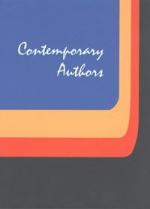|
This section contains 5,376 words (approx. 18 pages at 300 words per page) |

|
SOURCE: "Siegfried Sassoon and Georgian Realism," in Twentieth Century Literature, Vol. 14, No. 4, January, 1969, pp. 199-209.
Moore is an American critic and educator. Here, he counters the common critical opinion that Sassoon's war poetry was radically different from the verse he produced before seeing battle action. Moore contends that Sassoon's early work contains the realistic characteristics pioneered by several Georgian poets and that these prewar poems are directly related to his later accomplishments.
The judgment that Siegfried Sassoon's pre-war poetry is pale, conventional, cloyingly romantic, and weakly derivative—in short, that it epitomizes what is today slightingly called "Georgian" verse—has become a critical commonplace. A corollary to this view assumes that the powerful war poetry of The Old Huntsman (1917) and Counter-Attack (1918) sprang full blown from his head, a result of the trauma of trench warfare. Robert Graves appears to be the first to have foisted this view upon...
|
This section contains 5,376 words (approx. 18 pages at 300 words per page) |

|


